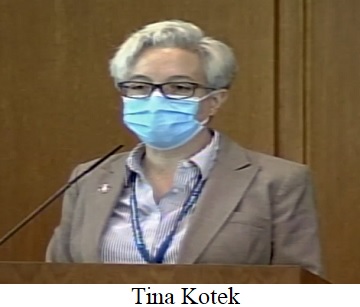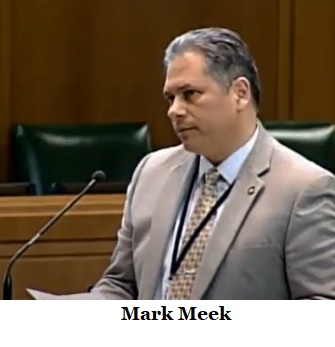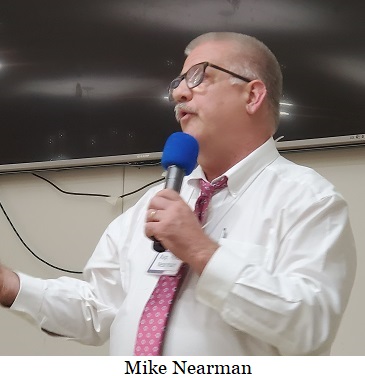 Post an Event
Post an Event
| Benton County Republicans’ Private Fundraising Event, “Bent-on Boots and Bling” with Trey Taylor |
| Friday, September 5, 2025 at 5:00 pm |
| Featuring Trey Taylor
Music Private Event
Friday, September 5, 2025 5:00-5:30 pm VIP Reception
5:30-8:00 pm Heavy Appetizers,
Auction, Concert
Red: $750 VIP Reception
Front Row Table Sponsor
White: $500 Table Sponsor
Blue: $50 per person
Limited Seating. Get Yours Now!!!
Support Local
Dress up: Bling, Cowboy, Patriotic Benton County Republican
FUNDRAISER
www.BentonGOP.org
Get your tickets today at:
https://www.bentongop.org/event-details/benton-county-republicans-fundraiser/form
About Trey:
Trey is the youngest African American Man in Country Music History. The Denver Post wrote
"It's impossible to miss his enthusiasm. With a fondness for cowboy boots, gaudy colors and dazzling jewelry, Trey Taylor could stand toe to toe with any of the Pop, Country or even Rap
contemporaries of his generation.“ |
| Trysting Tree Golf Club, 34028 NE Electric Rd., Corvallis |
First combat missions flown typically occur at night
Look up at night this week and you may see this F-15C Eagle flying night maneuvers. The Oregon Air National Guard’s 142nd Wing is conducting routine F-15 Eagle night training missions from February 27th through March 2nd.
Night training allows the Citizen-Airmen pilots based at the Portland Air National Guard Base to stay current with mandatory Air Force requirements.
“The first missions flown in any combat operation typically occur at night. It is critical for our pilots to train in the environment America expects them to win in,†said 123rd Fighter Squadron Commander Lt. Col. Josh Hovanas. "Our night missions are flown over the ocean or Eastern Oregon to minimize our impact on local communities."
Night flying is conducted as an essential training requirement for nighttime maneuvers to support mission and contingency response. Training flights will be completed each evening before 10:00 p.m.
A D V E R T I S E M E N T

A D V E R T I S E M E N T
The Portland Air National Guard Base employs around 1,500 Airmen who provide an economic impact of nearly $500 million to the region. The 142nd Wing defends our homeland with F-15 Eagle fighter jets, guarding the Pacific Northwest skies from Northern California to the Canadian border, as part of Air Combat Command and the North American Aerospace Defense Command (NORAD). Their mission is to provide unequaled, mission-ready units to sustain combat aerospace superiority and peacetime tasking any time, any place in service to our nation, state and community.
--Dollie Banner| Post Date: 2023-02-28 16:04:54 | |
Governor Budgets $200 million for Semiconductor manufacturing
Oregon is aggressively pursuing opportunities to bring home a portion of the $52 billion for semiconductor manufacturing and research made available under the federal CHIPS and Science Act. To that end, Governor Tina Kotek announced a new, $1 million grant program to help small and mid-sized Oregon businesses prepare competitive applications for the once-in-a-generation infusion of federal funds.
The grant program, which will be funded through Business Oregon’s Strategic Reserve Fund, is part of a larger strategy to ensure Oregon firms are allocated as much of the federal funding as possible. The funding will be distributed as grants to private semiconductor firms in Oregon to help with costs associated in preparing an application, including third party costs or professional services. The program will consider how applicants will serve historically underserved groups to create family-wage manufacturing jobs.
The Joint Committee on Semiconductors held its first hearing on
Senate Bill 4 after weeks of public testimony on the underlying policies. This bipartisan bill represents the first step on securing the future of Oregon's semiconductor economy.
Senate Bill 4 commits $200 million, which is in Governor Kotek’s budget, for grants and loans to qualifying businesses for the purpose of allowing those businesses to apply to the federal government for additional financial support made available through the CHIPS and Science Act.
A D V E R T I S E M E N T

A D V E R T I S E M E N T
The combination of Oregon's support and the federal CHIPS Act funds would create an opportunity to attract and grow the semiconductor and advanced manufacturing industry in Oregon. The national movement to expand domestic semiconductor production came about when the COVID-19 crisis disrupted shipments from Taiwan, the world’s most advanced chip foundry, and remote work increased demand. The tech wars inspired the Biden administration to distribute $52 billion to strengthen the domestic chipmaking sector. "It is great news for Oregon to be a global leader in advanced manufacturing and semiconductor innovation," Governor Kotek said.
“We are acting with an extraordinary sense of urgency to supercharge Oregon’s semiconductor industry, bring new jobs and money to our state, and build a better future for every Oregonian,†said co-chair Senator Janeen Sollman (D-Hillsboro). “We look forward to continuing the conversation about this first step and the work we will do later in session to maintain Oregon’s position as a global leader in semiconductors and advanced manufacturing.â€
"This bill is an important first step in ensuring Oregon's semiconductor industry can capitalize on the opportunity to receive CHIPS Act funding. Our next step needs to be bold and needs to provide more support for our job creators. Not only do these manufacturing jobs provide high wages, but we also know that it is critical for national security," said co-vice chair Senator Tim Knopp (R-Bend). “Yesterday’s revenue forecast has provided us with sufficient assurance that we have the dollars to invest in semiconductor and advance manufacturing without touching rainy day funds.â€
--Donna Bleiler| Post Date: 2023-02-27 15:29:03 | Last Update: 2023-02-27 15:45:20 |
Do the science
Recently, the Northwest Observer had a brief discussion with Astrophysicist Gordon Fulks, an expert on weather and climate. He said January was warmer than February would be, seemingly a contradiction of the seasons. With February weather in the history books turned out he was right because the Earth has an elliptical orbit. The current earth orbit has the planet further from the sun in February 2023 than it was in January of 2023 -- something not correctable by an executive order or a cap and trade tax.
The chart below covers the last 800,000 years of climate data derived from ice core samples and the study of celestial movements.

From the chart you can see that:
- Elliptical orbits, at the height of eccentricity, coincide with very cold ice ages.
- We are in the Holocene Climate Optimum, a time of minimal orbit eccentricity. That is expected to continue for about another 10,000 years.
- Periods of high CO2 follow periods of high volcanic activity as evidenced by volcanic dust detected in the ice core samples. Banning fossil fuels isn’t going to affect CO2 numbers.
- The blue line on top shows that the amount of solar radiation experienced at the polar regions varies with differing levels of Sun activity and changing atmospheric conditions. Fretting about the amount of ice at either the North or South Pole won’t change a thing.
As the solar system moves within our galaxy and our galaxy along with trillions of other galaxies moves around within the Universe we need to sit back, enjoy the ride and just be grateful for this gift of life on Earth. It’s time to realize that human activity is a product of nature and will never be its master.
--Tom Hammer| Post Date: 2023-02-27 11:44:16 | Last Update: 2023-02-27 20:33:53 |
Ongoing severe cold and inclement weather
Oregon's Governor Tina Kotek has now
declared a state of emergency in Multnomah County Oregon due to ongoing severe cold and inclement weather. This declaration comes at the request of Multnomah County Chair Vega Pederson and is based on the recommendations of the Oregon Department of Emergency Management (ODEM).
Throughout the week, the state has been in constant contact and coordination with impacted counties.
Some counties, such as Jackson and Josephine, requested and received state assistance, but no other counties have requested an emergency declaration at this time.
“This week’s record-breaking snowstorm impacted thousands of Oregonians and has caused increased demand for local warming shelters. With severe cold weather forecasted through next week the state is dedicated to providing the assistance needed to keep Oregonians warm and safe. I am grateful to all the volunteers, staff, and first responders who have been working around the clock in response to the storm,†Governor Kotek said. “This emergency declaration ensures state resources, personnel, and equipment can be activated to complement critical local resources as this situation progresses.â€
A D V E R T I S E M E N T

A D V E R T I S E M E N T
Governor Kotek’s declaration directs ODEM to coordinate the deployment of resources with the Oregon Health Authority, the Oregon Department of Transportation, and other relevant state agencies to support Multnomah County communities as needed. ODEM will facilitate the access and use of state resources, personnel, and equipment to protect communities and aid in the recovery.
The state of emergency will remain in effect for one week.
--Ben Fisher| Post Date: 2023-02-26 19:12:11 | Last Update: 2023-02-26 20:48:55 |
Reduces barriers for quick action reversing overdose
The Oregon House will vote on a bill that will help save lives from opioid overdose. Representative Ed Diehl (R-Turner) introduced an amendment that replaced
House Bill 2395, reducing barriers for quick action in response to overdose of opioid in the application of short-acting opioid antagonist. Fentanyl is gripping Oregon’s young people, and this bill allows school administrators, teachers and employees to administer without liability or need for permission when a student is experiencing an opioid overdose.
The bill authorizes Oregon Health Authority to issue short-acting opioid antagonist kits and medical supplies to individual or entity who have encounters with people at risk of overdose. Decision to administer or not is immune from criminal and civil liability.
HB 2395 is the result of a bipartisan coalition and has earned the support of harm reduction advocates, law enforcement, clinicians, students, educators, local governments and our public health system. The bill combines previously introduced legislation into an omnibus harm reduction package focused on increasing access to overdose reversal medication and on the ground prevention, improving overdose data, and modernizing Oregon’s harm reduction statutes.
In 2021 over 745 Oregonians died from opioid overdoses, and nearly three Oregonians a day die from this tragic and growing epidemic across the entire state. According to the Oregon Health Authority, fentanyl is now the second leading cause of unintentional overdose in Oregon.
KGW reported that in 2022, crews collected 176,962 needles in the Downtown Enhanced Service area which covers a 213 block area in Portland. The needles came from public right of ways, as well as four drop box sites installed by Multnomah County within the district.
Fox News said addicts in Portland are reportedly turning to their food stamps to fuel their drug addiction, recycling bottles to garner cash to buy more fentanyl, all at the expense of the city's taxpayers. Portland resident Angela Todd released shocking footage showing people on the streets appearing to dump out water bottles shortly before cashing in on the plastic to raise money to buy more drugs.
A D V E R T I S E M E N T

A D V E R T I S E M E N T
“It is impossible to ignore the profoundly tragic impact illicitly-manufactured fentanyl is having across Oregon,†said Representative Maxine Dexter (D-Portland), a board-certified physician. “Our responsibility, as elected leaders, is to ensure the health and safety of Oregonians. This package is an opportunity to urgently take data-driven action that will start saving lives almost immediately upon passage.â€
“People are dying in escalating numbers because fentanyl is killing them,†said Multnomah County Commissioner and Emergency Physician Sharon Meieran. “[...] This package can be the state’s defibrillator to save lives now, reduce suffering, reduce hospitalization, and give Oregonians from all corners of the state a chance at recovery.â€
“Protecting Oregonians, maintaining safe communities and ensuring quality of life for Oregonians is the primary objective for Oregon’s public safety professionals,†testified the Oregon State Sheriffs’ Association, the Oregon Association Chiefs of Police, and the Oregon District Attorney’s Association. “The Opioid Harm Reduction Policy Package takes important steps to address barriers to harm reduction efforts with a focus on saving lives.â€
“Fentanyl is wreaking havoc across Oregon. This is a pain my community knows all too well. We must do everything possible to save lives, and this legislation is a step in the right direction,†said Representative Morgan (R-Grants Pass).
Representative Bobby Levy (R- Echo) expressed concern that the bill allows a minor to obtain outpatient diagnosis or treatment of a substance use disorder without parental knowledge or consent. She states, “In my opinion, one of the main contributors to drug addiction is the fact that parents are not involved. Parents should be more involved, mental health providers get dealt a vague criteria that says they are able to withhold information from the parent, if the mental health provider ‘determines that it is not in the minor’s best interest to disclose the information’. In some circumstances I believe that may be the correct course of action but it can become obtuse and leave room for harmful decisions to be made on the behalf of another person that may need support from their parent.â€
--Donna Bleiler| Post Date: 2023-02-25 12:40:03 | Last Update: 2023-02-25 17:23:21 |
Citizen safety at risk
A coalition of local officials in Linn County Oregon, including county, city and school leaders are asking Oregon's Governor Tina Kotek to amend the controversial Ballot Measure 110 and make the possession of Class I federal narcotics — such as heroin, cocaine and meth — state crimes and include punitive sanctions for both adults and juvenile.
The letter was also sent to every member of Oregon’s Legislative delegation.
Measure 110 effectively decriminalized possession of small amounts of hard drugs, making them misdemeanors carrying a fine of just $100, which would be forgiven if the person sought addiction help.
A recent state audit indicated more than $300 million of Oregon’s marijuana tax funds have been diverted under Ballot Measure 110, with little accountability of how that money has been used.
Local officials say that since the passage of the measure in 2020 and implementation in 2021, communities in our county — and statewide — have seen increased drug use and overdoses, increased property crimes and families and children suffer.
Roger Nyquist, chair of the Linn County Board of Commissioners, believes the intent of Ballot Measure 110 is “not coming to fruition … addiction is up and the number of addicts accessing treatment is down.â€
Andy Gardner, superintendent of Greater Albany Public School says Ballot Measure 110 has “profoundly impacted how our kids view drugsâ€, adding “Oregon adults now have more access to controlled substances than ever before and now face fewer repercussions for possession or usage.â€
He is worried that the acceptance of drug use in Oregon will create addiction issues at younger ages and will “affect future generations of kids.â€
“Ballot Measure 110 is a disaster,†Linn County District Attorney Doug Marteeny said, adding that advocates saw it as something that would increase treatment for addicts, but that is not the case.
“We need to always remember that one function of law is to declare moral standards of the community. Law communicates the expectations we all have for one another,†he said.
Linn County Sheriff Michelle Duncan spent several years working drug cases and said it often took an arrest and a court appearance for someone with a drug addiction to “hit rock bottom†and realize they needed help.
“There is no stigma about drug use anymore,†Sheriff Duncan said. “Kids think it’s OK because there are no consequences.â€
Local homeless shelters are seeing increased drug overdoses to the point the need for Narcan and training was a topic at a recent meeting of local groups interested in helping homeless people in Albany.
Torri Lynn, director of the Linn County Juvenile Department said that although Ballot Measure 110 is supposed to redirect funds to treatment programs, virtually no money was designated for juvenile programs.
Lynn said that in 2021,
Senate Bill 817, “eliminated all fines and fees for juvenilesâ€, affecting the Juvenile Department’s ability to respond to any citations with anything other than providing a phone number to the hotline for a youth who is in possession of heroin, methamphetamines or cocaine.
The state audit showed the cost of operating a telephone hotline for people cited with drug possession, cost $7,000 per call. Of about 100 callers, only 28 actually asked for addiction recovery services assistance.
A D V E R T I S E M E N T

A D V E R T I S E M E N T
Justin Thomas, director of Linn County’s Alcohol & Drug Programs, said “The unfortunate downside of the measure is that more people may be using substances with the assumption that there are little to no consequences since the legal ramifications have been drastically reduced.â€
Thomas added, “The practice of making substance use more socially acceptable is troubling to treatment providers because of the progressive nature of addiction that occurs when one uses substances consistently over time. In Linn County, we have not seen a decrease in the requests from people to access alcohol and drug treatment with the implementation of Measure 110.â€
Local businesses are also seeing increased issues stemming from community drug use.
Janet Steele, president of the Albany Chamber of Commerce, said that organization is “extremely concerned that the state has legalized the possession of small amounts of all drugs, including cocaine, LSD, meth and oxycodone.â€
“Like Albany residents, businesses are seeing the negative effects of Oregon’s drug laws and face the day-to-day reality of people with addictions and homeless issues harming themselves, employees, customers and buildings,†Steele said.
In a letter to the City Council, Albany Mayor Alex Johnson II said the community is doing what it can to combat drug and homeless issues, “However, the increases in vandalism, disruption of operations, assaults and littering are very evident around our city. These criminal acts put the citizens of Albany, as well as Albany businesses, at risk. They endanger staff and facilities, impact productivity and damage our ability to attract investment and create healthy economic growth. The current situation cannot be allowed to continue.â€
The letter was signed by Albany Chamber of Commerce President Janet Steele, Albany Mayor Alex Johnson II, Greater Albany Public Schools Superintendent Andy Gardner, Linn County Commissioners Roger Nyquist, Sherrie Sprenger and Will Tucker, District Attorney Doug Marteeny, Sheriff Michelle Duncan, Juvenile Director Torri Lynn, Alcohol & Drug Director Justin Thomas and Sweet Home Mayor Susan Coleman.
--Ben Fisher| Post Date: 2023-02-24 22:05:03 | Last Update: 2023-02-24 22:25:51 |
Exceeds Governor’s request
Governor Tina Kotek asked for $130 million to address homelessness and housing in her state of emergency and in her proposed budget. She has already issued three executive orders and urged lawmakers to push through her request and told them how she wanted the money spent. Apparently, her majority party wants to impress her with an estimated $200 million package.
Legislative housing chairs, Representative Maxine Dexter (D-NW &
Downtown Portland) and Senator Kayse Jama (D-Portland), and Representative David Gomberg (D-Lincoln & Western Benton/Lane Counties) gave a preview of the estimated $200 million Affordable Housing and Emergency Homelessness Response Package (
HB 2001 and
HB 5019). They say it is the result of a bipartisan and bicameral process. They aim to pass the final package by mid-March to urgently respond to the current housing and homelessness crisis facing Oregon. Hearing on HB 2001 is scheduled February 27 at 8AM, room HR F in the state capitol, and is open to
submit testimony.
The proposed package addresses the homelessness emergency response (
HB 5019):
- Fully funds the Governor’s Homelessness State of Emergency ($130 million);
- Provides $27 million in additional funding to address homelessness in other 25 rural counties;
- Prevents more Oregonians, including unhoused youth, from being evicted for non-payment giving more time to access Rental Assistance and other services to help stay in their homes – lengthens eviction notice from 72 hours to 10 days and includes a right of redemption (HB 2001);
- Invests $25 million in critical support for most vulnerable youth and families connecting them with rental assistance, shelter facilities, outreach, culturally-specific services, mental health or substance abuse service, and continue other transitional options that has made Oregon the nation’s second largest decrease in youth homelessness.
The proposed package addresses affordable housing (
HB 2001):
- Meets the Governor’s goal of building 36,000 affordable housing units annually by speeding up production.
- $20 million to ramp up the production of affordable modular home production using Oregon’s mass timber and other conventional materials to support Oregon’s homegrown industries;
- $3 million Revolving Loan Fund to support local governments and developers with predevelopment loans to build housing for middle-income families;
- $5 million in grants for farmers to improve the health and safety conditions of on-site housing for agricultural workers;
- Makes building affordable housing the top priority for the state through structural changes to Oregon’s land use system and partnerships with local governments streamlining urbanization process.
“Every Oregonian deserves to have access to safe and affordable housing in the community of their choice," said Representative Dexter. “ I am proud to put forth this package that will deliver bold and effective relief to every corner of the state.â€
“Oregonians need relief now, and they need stability in the long term. This bill accomplishes both,†said Senator Jama. Representative Gomberg added, “I’m proud to say we were able to secure funding that ensures our rural and coastal regions will be taken care of.â€
Representative Jami Cate (R-Lebanon) said it is an emergency housing package that doesn’t create more housing. “The Governor intends to spend over a billion dollars on housing and has set an incredibly ambitious goal of boosting Oregon's production to 36,000 units per year, and yet this rushed housing "omnibus" package does nothing to actually achieve that goal. Though some included items have merit (and others erode landlords' ability to operate their businesses, risking the loss of more rental units), we need to see more than lip service to the promise of actual housing solutions if we are going to address this crisis.â€
The bills are sponsored by Democrats, but they say the proposal includes Republican and Democratic initiatives and is supported by a broad coalition of local governments and community leaders. The question for taxpayers is by adding $70 million onto a 26% inflated budget, is this the squeeze to go after the kicker?
--Donna Bleiler| Post Date: 2023-02-24 10:01:15 | Last Update: 2023-02-24 16:38:18 |
Will they steal a portion of the kicker?
Income taxes paid by individuals and corporations continue to surprise economists in anticipation of the May forecast.
Economists increased general fund and lottery revenues by $696 million to roughly $31.5 billion to spend. Far short of the $116.5 billion budget request on Governor Tina Kotek's wish list.
The Oregon’s personal income kicker rebate is estimated to return nearly $4 billion back to taxpayers in 2024, doubled from $1.9 million received in 2022. The corporate tax kicker is projected at $1.5 billion for schools.
The projected forecast for the 2023-25 biennium is a decrease of 10.8% in personal income and a decrease of 28.8% in corporate revenue. That could mean no income tax kicker will be triggered. But they are optimistic that the following biennium will gain back the loss.
It may be called a corporate tax kicker, but corporate earns their money from purchases we make. In 2012 Oregon voters were convinced to pass Measure 85 and forego pricing stability by diverting the corporate kicker revenue into a fund for K-12 public schools instead of rebating the money to companies. When it was passed, the corporate refunds typically averaged about $120 million every two years. In 2019 the corporate kicker sent $616 million to schools, and in 2021 it sent $420 million.
The 1979 legislative session started a wave of restrained spending and passed a surplus kicker statute along with a spending limit and a major tax relief plan. Voters approved the package and in 1999 it was referred to the voters as a Constitutional Amendment. Voters approved that when the actual General Fund revenues exceed the forecast amount by more than two percent, it would be returned to taxpayers who paid it. The mythology was accountability putting the public in control against a runaway budget.
A D V E R T I S E M E N T

A D V E R T I S E M E N T
But, Democrats think they have a loophole to confiscate part of the personal income kicker. In a slight of hand, when they find out how much the kicker will be, they make up a reason to go back and recalculate the prior budget so the calculation for the kicker return is less. This underhanded play is in the works again. The forecasted personal income kicker is estimated for an average annual wage to be $5,200 income tax refund in 2024.

Two different bills have been introduced to grab your Kicker Income Tax Refund. Senator Lew Frederick (D-Portland) and Senator Kayse Jama (D_Portland) sponsored an amendment to the Oregon Constitution to eliminate the kicker in
SJR 26 and the companion bill
SB 774. They removes all references to the individual income tax kicker and leaves the corporate kicker as funding schools. These bills remove all constraints to passing new projects and programs in high revenue years that can’t be sustained in down years. That is why there is a budget shortage going into the next biennium, because federal help throughout the pandemic ended up creating new programs that now need taxpayer funding.
Even though there isn’t a direct line in Governor Kotek’s budget request, Republican legislators are saying not so fast. By setting her budget goal so high, the governor is pressuring legislators to come up with the extra funds to pay for it. Senator Tim Knopp (R-Bend) introduced
SB 990 as part of the Senate Republican Caucus’s Equitable Oregon agenda. This bill will return the next kicker in the form of a check instead of a credit. Senator Knopp stated,

“While Oregonians still face high costs of food, fuel, child care, and rent – all of which are necessary to live, work, and raise a family – the state continues to bring in record revenue. Thanks to the Personal Kicker, Oregon taxpayers will get some of their taxes back and with it, a well-deserved break from the persisting burden of inflation and high costs.â€
If Governor Kotek doesn’t get the 26 percent growth in her budget, it will set up an epic fight and behind closed-door deals and arm twisting. It is more than losing some of the kicker tax refund, but it will set a new high budget level - 26 percent higher - that won’t be sustainable in a down year forecasted for next biennium.
--Donna Bleiler| Post Date: 2023-02-23 10:54:25 | Last Update: 2023-02-23 15:11:18 |
March revenue forecast gives hope
Governor Tina Kotek issues statement in response to first
revenue forecast of 2023. “As inflation continues to slow, this revenue forecast shows that we can anticipate having more predictability and stability for the coming budget cycle. While this is encouraging news, the legislature still has some tough choices to make. We will have to keep focused and stay the course in order to make much-needed investments in Oregonians’ most urgent shared priorities: housing and homelessness, behavioral health, and education.â€
Senate Committee on Finance and Revenue met jointly with the House Committee on Revenue to hear the March Revenue Forecast. Senator Mark Meek (D-Clackamas), Chair of Senate Committee on Finance and Revenue, commented, “We received some good news today: inflation is slowing, employment is up, income is up, and the likelihood of a slow growth or soft landing situation is increasing. It’s clear that we still need to prepare for a potential economic speed bump in our future, and we must continue to be strong stewards of Oregon tax dollars, but I’m confident that our state can deliver on the services and programs Oregonians need most.â€
Senate Majority Leader Kate Lieber (D-Beaverton) responded, “Our state is in a stronger position than anticipated because Oregon workers and businesses are delivering. We must continue to responsibly manage Oregonians’ hard-earned tax dollars and prepare for the future, while maintaining critical support for Oregon’s working families and communities in every part of our state. During the 2023 Legislative Session, Oregon Senate Democrats are standing up for the “
Oregon Works†agenda to ensure every Oregonian lives with dignity in safe, sustainable communities free from racism and discrimination with equal access to quality health care, world-class schools, and secure, good-paying jobs."
Majority Leader Julie Fahey (D-West Eugene & Veneta) reiterated Governor Kotek’s aspirations, “Over the coming weeks and months, House Democrats will stay focused on using the opportunity of this legislative session to address the most pressing issues facing Oregonians, including housing, homelessness, community safety, and getting our kids’ education back on track. As always, our budget decisions will reflect these critical bipartisan priorities.â€
A D V E R T I S E M E N T

A D V E R T I S E M E N T
The House Republican Leader Vikki Breese-Iverson (R-Prineville) issued a statement on behalf of the House Republican Caucus. “The quarterly revenue forecast revealed our state’s economy and revenue influx is stable. However, we must not forget the reality Oregonians are experiencing on a daily basis – inflation at a rate of over 8 percent, gas at nearly 4 dollars a gallon, and a dozen eggs which cost even more than that ($5.22).
“The State of Oregon experienced a historic infusion of federal funding, but Oregonians and the Legislature must face the reality that these funds have ended. For the remainder of the 2023 Legislative Session, we must pursue fiscal responsibility which includes leaving our Education Stability Fund (ESF) and rainy-day funds (RDF) alone.
“We must return Oregon’s ‘kicker’ back into the hands of hardworking Oregonians. While my Pendleton friends would say “let er’ buck,†I say “let er’ kick.â€
--Dollie Banner| Post Date: 2023-02-23 10:38:12 | Last Update: 2023-02-25 11:15:49 |
Urging OHP members to update information
The Oregon Health Authority (OHA) announces that Oregon Health Plan (OHP) coverage renewals will resume on April 1. While most people will continue to qualify for existing benefits, OHA is required to review eligibility for all 1.47 million OHP members by June 2024. Members will receive a notice between April 2023 and January 2024.
"Health care is vital to Oregon families, and we want to maintain the coverage they depend on," said interim OHA Director James Schroeder. "Our goal is to make sure that everyone who is eligible for benefits, stays covered. Keeping your contact information up to date and responding quickly to further requests will help your renewal go faster and avoid any preventable disruptions in your care."
OHA and the Oregon Department of Human Services (ODHS) are encouraging OHP members to keep their contact information up to date, so they can receive renewal forms and requests for information. Such messages will be important in the coming months and will require members to respond in a timely manner.
There are several ways people can update their contact information, including:
- Online at: oregon.gov
through the coordinated care organization (CCO). Members can find their CCO contact information by visiting: CCO Plans.
- By mail at: ONE Customer Service Center, PO Box 14015, Salem, OR 97309.
- By phone at: 1-800-699-9075 or TTY 711. Phone lines are open Monday through Friday 7 a.m. to 6 p.m. PST. Hold times are shortest in the morning from 7 a.m. to 8 a.m. When calling a toll-free language line, interpreters are available in 16 languages.
- By contacting an OHP-certified Community Partner at OHP Local Help.
- In person at any Self-Sufficiency Program, Aging and People with Disabilities or Area Agency on Aging office. Find locations and phone numbers at: ONEOfficeLocations.
OHA expects some members to be automatically renewed without any action necessary. If additional information is needed, however, a notification will be sent to the OHP member, who will then have 90 days to complete the renewal form and provide additional information to verify their eligibility. If someone is determined to be no longer eligible for OHP, they will have 60 days before their OHP benefits will end.
A D V E R T I S E M E N T

A D V E R T I S E M E N T
State health officials want anyone who no longer qualifies for OHP coverage to know that they still have affordable health coverage options. The Oregon Health Insurance Marketplace (OHIM) will send information to people who are no longer eligible for OHP benefits and advise of potential coverage options and financial help through the Marketplace. People who do not enroll through the Marketplace will receive a second notice 30 days before their special enrollment period ends, based on the date their OHP benefits conclude. The Marketplace Transition Help Center will help people understand their options, how to transition to the Marketplace, and to find help from local health coverage experts.
The large number of OHP redeterminations is expected to cause greater wait times, delays, and possible interruptions to people's OHP benefits. OHP members are encouraged to respond quickly after they receive a request for information to avoid any possible delays. The fastest way members can provide an update is by going to benefits.oregon.gov and logging into their ONE account.
In March 2020, the United States government declared a Public Health Emergency (PHE) because of the COVID-19 pandemic. The PHE brought regulatory flexibilities and additional funding for temporary benefits and services for people in Oregon. The flexibilities and programs included continuous coverage for OHP members, higher Supplemental Nutrition Assistance Program (SNAP) food benefit amounts, and additional benefits for people who receive long-term services and supports through ODHS. Keep up with changes to
SNAP benefits happening in March 2023.
OHP members who have questions about the renewal process can call the ONE Customer Service Center (1-800-699-9075 or TTY 711) or local health coverage experts to assist with the renewal process in a free one-to-one visit at OregonHealthCare.gov/GetHelp. For more information about OHP renewals, members can visit the
OHA web site.
--Ryan Bannister| Post Date: 2023-02-22 17:20:42 | Last Update: 2023-02-21 18:50:30 |
What every voter should know about the Oregon Constitution
Voters are asked every election to vote on amendments to the Oregon Constitution. But how many have even read the Oregon Constitution to know the intent or consequences of their vote?
For the next three Wednesday evenings, you have an opportunity to learn what the Oregon Constitution says and the background to why it was written that way. Mike Nearman is a veteran on teaching the Oregon Constitution and offers a background of knowledge on all the wise and unwise decisions voters have made to amend it.
The classes are free and open to the public. You can attend in person at The River Church, 4675 Portland Rd, NE, Salem, or view on Rumble on TheRiverNW channel. Classes are 7pm to 9pm, February 22, March 1, and March 8.
A D V E R T I S E M E N T

A D V E R T I S E M E N T
One such amendment is Measure 114, which narrowly passed in the 2022 election that is going through a court challenge. The measure would require a permit to purchase a firearm, require a background check, and imposes restrictions regarding "large-capacity" magazines. The measure continues to be delayed as Joseph Arnold, et al. v. Tina Kotek et al claims it is unconstitutional.
Section 27 of Article 1 of the Oregon Constitution says, “The people shall have the right to bear arms for the defense of themselves, and the State, but the Military shall be kept in strict subordination to the civil power.â€
Justice Berkeley Lent, Oregon Supreme Court, interpreted Section 27 for the first time in 1980 in State v. Kessler. He traced the Oregon constitutional language of 1859 through several earlier state constitutions back to the 1689 Bill of Rights in England, which guaranteed that Protestants could have “arms for their defense.â€
Justice Lent wrote, “Our task, in construing a constitutional provision, is to respect the principles given the status of constitutional guarantees and limitations by the drafters; it is not to abandon these principles when this fits the needs of the moment.â€
The opinion confirms that in its historical context, the Oregon right as stated in the Oregon Constitution is meant to protect liberty against government oppression …while also protecting a citizen’s right to self-defense.
When government wants control over who can own a gun, where is the protected liberty against that government's oppression? Don’t miss the class on Section 27 of the Oregon Constitution.
--Donna Bleiler| Post Date: 2023-02-21 17:27:05 | Last Update: 2023-02-22 13:51:12 |
How will it impact the state?
The Oregon Board of Forestry called a special board meeting to move forward with a proposal that would reduce nearly 35% of the timber harvest in the State Forest. This reduction, which is part of the Western Oregon State Forests
Habitat Conservation Plan (HCP), could potentially result in the loss of millions of dollars for the North Coast timber industry, forestry workers, and the budgets of Clatsop, Columbia, and Tillamook Counties. Representative Cyrus Javadi (R-North Coast) and Senator Suzanne Weber (R-Tillamook) commented in response to the meeting on the devastating impacts the plan will have on local governments, local economy, jobs, and essential services like public safety.
Rep. Javadi said, “this plan is going to devastate our local timber economy. Years ago, the North Coast gave these forests to the state for essentially nothing, with the promise that it would be managed for the benefit of the local economy. This forest provides hundreds of good-paying jobs in our communities.â€
Last week, on a 4-3 vote, the Board of Forestry rejected a proposal that would have required them to go back to the drawing board to balance the region's economic needs better. The HCP changes will set aside 55% of forest land for habitat, leaving less than half of the forest for active management. A 35% reduction in harvest from ODF predicted levels under this HCP. From 2006 to 2015 Oregon State Forests
harvested 56% of net growth, 18% of net growth succumbed to mortality, and 26% of net growth remained as an increase in net volume on the forest. The HCP has been touted as necessary to grow habitat for wildlife but the current forest management plan is already doing this at an astounding rate of 26% of net growth.
State Forests are directed to be sustainably managed to provide social, economic, and environmental benefits to all Oregonians. In October of 2020, the Board of Forestry (BOF) directed the State Forests Division to begin the National Environmental Policy Act (NEPA) process for the draft Western Oregon State Forests Habitat Conservation Plan (HCP) and continue developing an associated Forest Management Plan (FMP). These parallel planning processes have been closely coordinated to ensure alignment and consistency in management goals, objectives, and strategies. ODF said they recognize that public engagement is a key element in developing an HCP and FMP that reflect the values of all Oregonians, and is committed to providing information and engaging in dialogue.
Not everyone agrees that ODF has been forth coming. Association of Oregon Counties accused ODF of developing the plan behind closed doors and applied to the Federal Services for an HCP, before they released a draft environmental impact statement. That statement showed harvest levels having a much better outcome than what would occur without an HCP and essential to achieving Greatest Permanent Value. However, staff’s further modeling for the Implementation Plan and Forest Management Plan contained additional constraints and those additional constraints result in lower harvest levels. Therefore, the plan’s harvest level projections are actually 27% less than the environmental impact statement and 33% less than the business case analysis.
The lower harvest levels under the Implementation Plan will result in layoffs of public service providers including police officers, teachers, social workers, and emergency services staff. In addition, workers in fully benefited family wage jobs in the timber industry and support services will lose their jobs at a time when no similar jobs exist in rural counties.
Clatsop County Board of Commissioners Chair, Mark Kujala, commented, “Beyond the devastating financial impacts on local governments (an estimated $8.5 million annual reduction in Clatsop), the County is also concerned about the broader economic and social implications of the HCP. According to the Oregon Forest Resources Institute, eleven (11) jobs are created in Oregon for every million board feet of timber harvested. It is also estimated for every $1 million of ODF timber revenue generated, an additional $1.2 million is generated for local forest sector businesses who log, haul and mill the timber.†He maintains that, “The HCP process must study and consider the impacts of job loss and government service reductions on our rural economy.â€
Washington County Commissioner, Jerry Willey, also expressed county concerns, “What appears unsettling though, is the drastic reduction in projected harvest levels from ODF’s Business Case Analysis of the HCP in 2018 to present day. Harvest levels are now 24 % lower than originally projected. These varying numbers show me that we have no clear grasp on the full impacts of the HCP, a 70-year plan. We could
potentially be destroying the timber industry completely, which does not meet Greatest Permanent Value.â€
A D V E R T I S E M E N T

A D V E R T I S E M E N T
Senator Weber supports her counties, “Give all Oregonians a chance for a more balanced plan. Current and future generations of Oregonians shouldn’t get stuck with a bad plan just because the agency didn’t have the foresight to examine a full range of options when it had the chance. I want to be clear that...the Board...direct ODF to take practical and necessary steps to address shortcomings that are now so obvious...â€
The Oregon Log Buyers point out that the lack of housing needs more wood, the most environmentally friendly building material that can be used. When modeling carbon storage and output for the upcoming Forest Management Plan, at least one and likely two mills tributary to state forests will be closed. Many people only look at the closure of a mill, but this is devastating to the communities these mills reside in as the spending by employees goes away and the businesses supported by the mill either go out of business or scale back.
On the other hand, such organizations as the Audubon and fishing groups, Riverkeepers, and Oregon Wild that don’t see the timber impact on communities, support the plan and don’t see a need for further research.
The HCP will also impact ODF’s own budget. State Forests Division revenue under the HCP will fall 34%, commensurate with the drop in harvest volume, more if timber prices continue to fall. At the same time the Governor is requesting agencies plan for 10% budget cuts. Without an adequate budget, the department is likely to fail to respond to and manage wildfires. The Governor states Oregon is facing an increasingly devastating wildfire season. How will the state deal with the layoff of so many fire fighters.
--Donna Bleiler| Post Date: 2023-02-20 17:06:26 | Last Update: 2023-02-20 14:17:42 |
Read More Articles










 From the chart you can see that:
From the chart you can see that:









 Two different bills have been introduced to grab your Kicker Income Tax Refund. Senator Lew Frederick (D-Portland) and Senator Kayse Jama (D_Portland) sponsored an amendment to the Oregon Constitution to eliminate the kicker in SJR 26 and the companion bill SB 774. They removes all references to the individual income tax kicker and leaves the corporate kicker as funding schools. These bills remove all constraints to passing new projects and programs in high revenue years that can’t be sustained in down years. That is why there is a budget shortage going into the next biennium, because federal help throughout the pandemic ended up creating new programs that now need taxpayer funding.
Two different bills have been introduced to grab your Kicker Income Tax Refund. Senator Lew Frederick (D-Portland) and Senator Kayse Jama (D_Portland) sponsored an amendment to the Oregon Constitution to eliminate the kicker in SJR 26 and the companion bill SB 774. They removes all references to the individual income tax kicker and leaves the corporate kicker as funding schools. These bills remove all constraints to passing new projects and programs in high revenue years that can’t be sustained in down years. That is why there is a budget shortage going into the next biennium, because federal help throughout the pandemic ended up creating new programs that now need taxpayer funding.
 “While Oregonians still face high costs of food, fuel, child care, and rent – all of which are necessary to live, work, and raise a family – the state continues to bring in record revenue. Thanks to the Personal Kicker, Oregon taxpayers will get some of their taxes back and with it, a well-deserved break from the persisting burden of inflation and high costs.â€
“While Oregonians still face high costs of food, fuel, child care, and rent – all of which are necessary to live, work, and raise a family – the state continues to bring in record revenue. Thanks to the Personal Kicker, Oregon taxpayers will get some of their taxes back and with it, a well-deserved break from the persisting burden of inflation and high costs.â€







